Bigger Watermelon Harvest Tips are what every home gardener dreams of, right? Imagine sinking your teeth into a juicy, sweet watermelon that you nurtured from a tiny seed right in your own backyard! Forget those bland, store-bought watermelons; we’re talking about a flavor explosion that only comes from homegrown goodness. But let’s be honest, getting a bountiful watermelon harvest can feel like a daunting task.
Watermelons have a rich history, dating back thousands of years to Africa, where they were prized for their hydrating properties in arid climates. Over time, different varieties have been cultivated worldwide, each with its unique flavor and size. But regardless of the variety, the desire for a plentiful harvest remains the same.
That’s where these DIY tricks and hacks come in! I’m going to share some simple, yet effective, techniques that will significantly increase your chances of enjoying a bigger watermelon harvest this season. We’ll cover everything from soil preparation and pollination secrets to watering strategies and pest control tips. Why spend a fortune on watermelons when you can grow your own, bursting with flavor and satisfaction? Let’s get started and transform your garden into a watermelon wonderland!
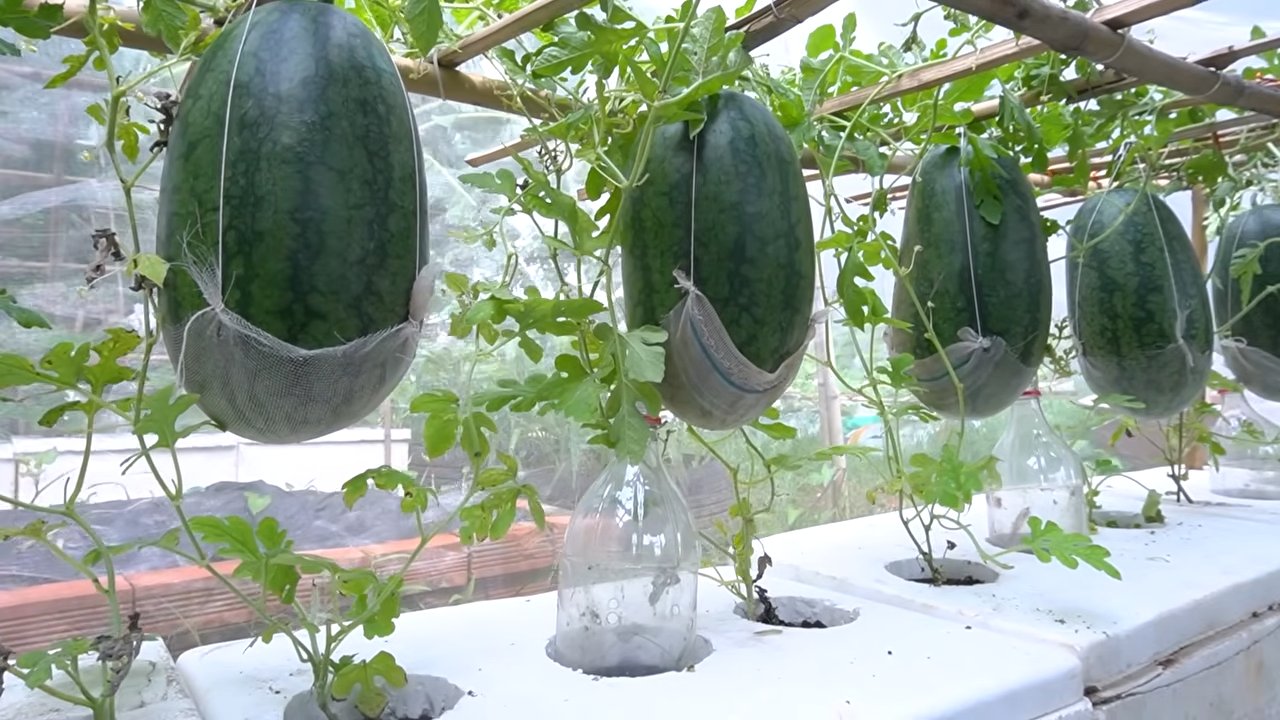
So erntest du riesige Wassermelonen: Mein ultimativer DIY-Guide
Hey Leute! Ich liebe Wassermelonen, und nichts ist befriedigender, als eine riesige, saftige Melone aus dem eigenen Garten zu ernten. Über die Jahre habe ich einige Tricks gelernt, die mir geholfen haben, meine Wassermelonenernte deutlich zu vergrößern. Ich teile heute meine besten Tipps und Tricks mit euch, damit auch ihr bald eure eigenen Monster-Wassermelonen ernten könnt!
Die Grundlagen: Standort, Boden und Sortenwahl
Bevor wir uns in die Details stürzen, ist es wichtig, die Grundlagen zu verstehen. Eine erfolgreiche Wassermelonenernte beginnt mit der richtigen Vorbereitung.
* Sonnenschein ist König: Wassermelonen lieben die Sonne! Wählt einen Standort, der mindestens 6-8 Stunden direkte Sonneneinstrahlung pro Tag erhält. Je mehr Sonne, desto besser!
* Gut durchlässiger Boden: Wassermelonen mögen keinen “nassen Füße”. Der Boden sollte gut durchlässig sein, damit das Wasser nicht stehen bleibt. Schwere Lehmböden können mit Kompost, Sand oder anderer organischer Substanz verbessert werden.
* Der richtige pH-Wert: Ein leicht saurer Boden mit einem pH-Wert zwischen 6,0 und 6,8 ist ideal für Wassermelonen.
* Die richtige Sorte wählen: Nicht alle Wassermelonensorten sind gleich. Einige sind besser für bestimmte Klimazonen geeignet als andere. Informiert euch, welche Sorten in eurer Region gut wachsen. Beliebte Sorten für große Melonen sind ‘Carolina Cross’, ‘Charleston Gray’ und ‘Black Diamond’.
Schritt-für-Schritt-Anleitung: So ziehst du deine Wassermelonen groß
Jetzt geht’s ans Eingemachte! Hier ist meine Schritt-für-Schritt-Anleitung, um deine Wassermelonen zum Wachsen zu bringen:
1. Vorkultur (optional, aber empfohlen): Ich starte meine Wassermelonen gerne drinnen, etwa 4-6 Wochen vor dem letzten erwarteten Frost. Das gibt ihnen einen Vorsprung.
* Verwende Anzuchttöpfe oder -schalen mit guter Anzuchterde.
* Säe die Samen etwa 2,5 cm tief.
* Halte die Erde feucht, aber nicht nass.
* Stelle die Anzuchttöpfe an einen warmen, sonnigen Ort oder verwende eine Pflanzenlampe.
2. Bodenvorbereitung: Während die Setzlinge wachsen, bereite ich das Beet vor.
* Entferne Unkraut und Steine.
* Lockere den Boden gründlich auf.
* Arbeite reichlich Kompost oder gut verrotteten Mist ein. Das gibt den Pflanzen einen guten Start und versorgt sie mit Nährstoffen.
* Ich füge auch gerne etwas Knochenmehl hinzu, um die Wurzelentwicklung zu fördern.
3. Auspflanzen: Sobald die Frostgefahr vorüber ist und die Bodentemperatur mindestens 18°C beträgt, können die Setzlinge ausgepflanzt werden.
* Härte die Setzlinge vor dem Auspflanzen ab, indem du sie tagsüber für einige Stunden ins Freie stellst.
* Pflanze die Setzlinge in einem Abstand von 90-120 cm voneinander.
* Gieße die Setzlinge nach dem Auspflanzen gründlich an.
4. Bewässerung: Wassermelonen brauchen viel Wasser, besonders während der Fruchtbildung.
* Gieße regelmäßig und gründlich, besonders bei trockenem Wetter.
* Vermeide es, die Blätter zu benetzen, um Pilzkrankheiten vorzubeugen.
* Ich verwende gerne einen Tropfschlauch, um das Wasser direkt an die Wurzeln zu bringen.
5. Düngung: Wassermelonen sind Starkzehrer und brauchen regelmäßige Düngung.
* Dünge die Pflanzen alle 2-3 Wochen mit einem ausgewogenen Dünger.
* Sobald die Früchte anfangen zu wachsen, wechsle ich zu einem Dünger mit höherem Kaliumgehalt, um die Fruchtbildung zu fördern.
* Ich verwende auch gerne organische Dünger wie Komposttee oder Fischdünger.
6. Bestäubung: Wassermelonen sind auf die Bestäubung durch Bienen und andere Insekten angewiesen.
* Pflanze bienenfreundliche Blumen in der Nähe des Wassermelonenbeets, um Bestäuber anzulocken.
* Wenn du wenig Bienen hast, kannst du die Blüten auch von Hand bestäuben.
* Dazu nimmst du den Pollen von einer männlichen Blüte und trägst ihn auf die Narbe einer weiblichen Blüte auf.
* Weibliche Blüten erkennst du an dem kleinen Fruchtansatz direkt unter der Blüte.
7. Fruchtansatz und Ausdünnen: Sobald die Früchte anfangen zu wachsen, ist es wichtig, sie auszudünnen.
* Lasse pro Pflanze nur 1-2 Früchte wachsen. Das gibt den verbleibenden Früchten mehr Energie zum Wachsen.
* Entferne alle beschädigten oder deformierten Früchte.
8. Schutz vor Schädlingen und Krankheiten: Wassermelonen können von verschiedenen Schädlingen und Krankheiten befallen werden.
* Kontrolliere die Pflanzen regelmäßig auf Schädlinge wie Blattläuse, Gurkenkäfer und Spinnmilben.
* Entferne befallene Blätter oder Pflanzen.
* Verwende bei Bedarf biologische Schädlingsbekämpfungsmittel.
* Achte auf Anzeichen von Krankheiten wie Mehltau, Fusariumwelke und Anthraknose.
* Sorge für eine gute Belüftung und vermeide es, die Blätter zu benetzen, um Krankheiten vorzubeugen.
9. Unterstützung der Früchte: Wenn die Wassermelonen größer werden, kann es notwendig sein, sie zu unterstützen, um zu verhindern, dass sie abbrechen.
* Lege die Früchte auf Stroh, Holzbretter oder spezielle Melonenhängematten.
* Das verhindert, dass die Früchte direkten Kontakt mit dem Boden haben und faulen.
Spezialtipps für riesige Wassermelonen
Hier sind einige zusätzliche Tipps, die mir geholfen haben, besonders große Wassermelonen zu ernten:
* Mulchen: Mulchen hilft, die Feuchtigkeit im Boden zu halten, Unkraut zu unterdrücken und die Bodentemperatur zu regulieren. Ich verwende gerne Stroh oder Holzhackschnitzel als Mulch.
* Beschneiden: Das Beschneiden der Wassermelonenpflanzen kann helfen, die Energie auf die Fruchtbildung zu konzentrieren. Entferne alle Seitentriebe, die keine Früchte tragen.
* Sonnenbrand vermeiden: Wenn die Wassermelonen der direkten Sonneneinstrahlung ausgesetzt sind, können sie Sonnenbrand bekommen. Decke die Früchte mit einem Tuch oder Stroh ab, um sie zu schützen.
* Regelmäßige Kontrolle: Kontrolliere die Wassermelonen regelmäßig auf Anzeichen von Reife. Die Reifezeit hängt von der Sorte ab, aber im Allgemeinen sind Wassermelonen reif, wenn sie einen dumpfen Klang von sich geben, wenn man auf sie klopft, und wenn die Stelle, an der sie auf dem Boden aufliegen, gelb wird.
Erntezeit!
Die Ernte ist der aufregendste Teil!
1. Reife erkennen: Wie bereits erwähnt, achte auf den dumpfen Klang beim Klopfen und die gelbe Stelle auf dem Boden.
2. Schnitt: Schneide die Wassermelone mit einem scharfen Messer oder einer Gartenschere vom Stiel ab. Lasse etwa 5-10 cm Stiel an der Frucht.
3. Genießen: Und jetzt kommt der beste Teil: Genieße deine selbst gezogene, riesige Wassermelone!
Ich hoffe, diese Tipps helfen dir, deine eigene beeindruckende Wassermelonenernte zu erzielen. Viel Spaß beim Gärtnern!
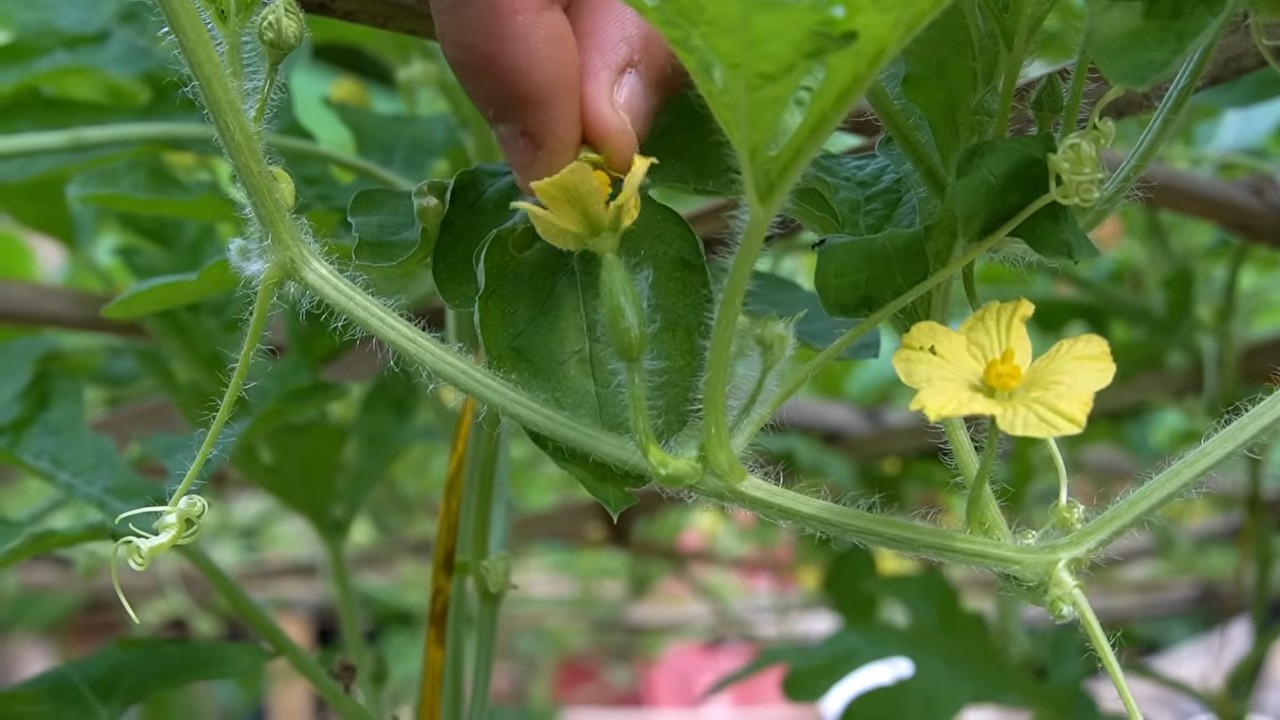
Conclusion
If you’re dreaming of a bountiful watermelon harvest, bursting with juicy, sweet fruit, then incorporating this simple DIY trick into your gardening routine is an absolute must. We’ve explored how a strategic approach to soil preparation, pollination enhancement, and vine management can significantly impact the size and quality of your watermelons. It’s not just about planting seeds and hoping for the best; it’s about actively nurturing your plants and providing them with the optimal conditions to thrive.
The beauty of this method lies in its adaptability. While we’ve outlined a specific approach, feel free to experiment and tailor it to your unique garden environment and watermelon variety. For instance, if you live in an area with naturally acidic soil, you might need to adjust the amount of lime you add. Or, if you’re growing a smaller, personal-sized watermelon variety, you might not need to be as aggressive with vine pruning. Consider using different types of organic fertilizers to see which yields the best results for you. Some gardeners swear by compost tea, while others prefer bone meal for its phosphorus content.
Don’t be afraid to get your hands dirty and try different techniques. Perhaps you want to try companion planting with flowers that attract pollinators, like zinnias or sunflowers. Or maybe you want to experiment with different mulching materials to see which best retains moisture and suppresses weeds in your garden. The possibilities are endless!
Ultimately, achieving a bigger watermelon harvest is about understanding your plants’ needs and providing them with the care and attention they deserve. This DIY trick provides a solid foundation for success, but it’s your own observations and adjustments that will truly unlock your garden’s potential.
We’re confident that by implementing these strategies, you’ll be amazed by the difference it makes. Imagine biting into a perfectly ripe, incredibly large watermelon that you grew yourself. The satisfaction is unparalleled!
So, what are you waiting for? Get out there, prepare your soil, hand-pollinate those blossoms, and prune those vines! We’re eager to hear about your experiences. Share your photos, tips, and triumphs in the comments below. Let’s create a community of watermelon enthusiasts and learn from each other’s successes (and even failures!). Your insights could be invaluable to other gardeners striving for a bigger and better watermelon harvest. Happy gardening!
Frequently Asked Questions (FAQ)
Q: How much lime should I add to my soil?
A: The amount of lime needed depends on your soil’s current pH level. Ideally, watermelons prefer a soil pH between 6.0 and 6.8. The best way to determine your soil’s pH is to conduct a soil test. You can purchase a soil testing kit at most garden centers or send a sample to your local agricultural extension office. The test results will provide specific recommendations for lime application based on your soil’s needs. As a general guideline, if your soil is significantly acidic (below 6.0), you might need to add several pounds of lime per 100 square feet. However, it’s always best to follow the recommendations from your soil test to avoid over-liming, which can also be detrimental to plant growth. Remember to incorporate the lime thoroughly into the soil before planting.
Q: Is hand-pollination really necessary?
A: While watermelons can be pollinated by bees and other insects, hand-pollination can significantly increase your chances of a successful and abundant harvest, especially if you live in an area with low pollinator activity or unpredictable weather. Hand-pollination ensures that female flowers are adequately pollinated, leading to better fruit set and larger watermelons. It’s a simple process that involves transferring pollen from the male flowers to the female flowers using a small brush or cotton swab. The best time to hand-pollinate is in the morning, shortly after the flowers open. You can identify female flowers by the small, immature watermelon at the base of the flower.
Q: How often should I water my watermelon plants?
A: Watermelon plants need consistent moisture, especially during fruit development. Water deeply and regularly, aiming for about 1-2 inches of water per week. The frequency of watering will depend on your soil type, climate, and the stage of growth. Sandy soils will drain more quickly and require more frequent watering than clay soils. During hot, dry weather, you may need to water daily. Use a soaker hose or drip irrigation to deliver water directly to the roots, avoiding wetting the foliage, which can increase the risk of fungal diseases. Check the soil moisture regularly by sticking your finger a few inches into the soil. If the soil feels dry, it’s time to water. Reduce watering as the watermelons approach maturity to prevent them from splitting.
Q: When should I start pruning my watermelon vines?
A: You can start pruning your watermelon vines once the plant has developed several healthy leaves and the main vine has started to spread. The goal of pruning is to direct the plant’s energy towards fruit production rather than vegetative growth. Remove any suckers (small shoots that grow from the base of the plant) and any non-fruiting lateral vines. Once the plant has set a few watermelons, you can also prune back the ends of the vines to encourage the plant to focus its energy on ripening the existing fruit. Be careful not to remove too much foliage, as the leaves are essential for photosynthesis and providing the plant with energy.
Q: What are some common pests and diseases that affect watermelons?
A: Watermelons are susceptible to several pests and diseases, including aphids, squash bugs, vine borers, powdery mildew, and fusarium wilt. Regularly inspect your plants for signs of infestation or disease. Aphids can be controlled with insecticidal soap or a strong stream of water. Squash bugs can be hand-picked or trapped under boards. Vine borers can be difficult to control, but you can try injecting Bacillus thuringiensis (Bt) into the vine stems. Powdery mildew can be prevented by providing good air circulation and avoiding overhead watering. Fusarium wilt is a soilborne disease that can be difficult to control. Choose disease-resistant varieties and practice crop rotation to minimize the risk of infection.
Q: Can I grow watermelons in containers?
A: Yes, you can grow watermelons in containers, but you’ll need to choose a large container (at least 20 gallons) and select a smaller, bush-type watermelon variety. Make sure the container has good drainage and use a high-quality potting mix. Water container-grown watermelons more frequently than those grown in the ground, as the soil in containers tends to dry out more quickly. You’ll also need to provide support for the vines as they grow. Fertilize regularly with a balanced fertilizer. While container-grown watermelons may not get as large as those grown in the ground, you can still enjoy a delicious harvest.
Q: How do I know when my watermelon is ripe?
A: Determining when a watermelon is ripe can be tricky, but there are a few telltale signs to look for. The most reliable indicator is the “ground spot,” the area where the watermelon rests on the ground. When the watermelon is ripe, the ground spot will turn from white to a creamy yellow color. You can also thump the watermelon with your knuckles. A ripe watermelon will sound hollow and deep. Another sign is the tendril closest to the watermelon stem. When this tendril turns brown and dry, the watermelon is usually ripe. Finally, the skin of a ripe watermelon will be dull and slightly waxy, rather than shiny.

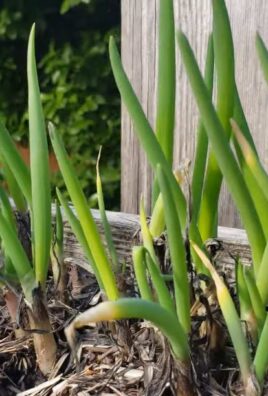
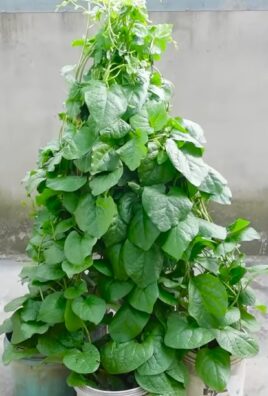
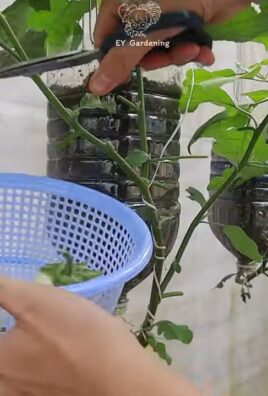
Leave a Comment